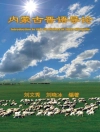Monsters, Animals, and Other Worlds is a collection of twenty-five medieval Japanese tales of border crossings and the fantastic, featuring demons, samurai, talking animals, amorous plants, and journeys to supernatural realms. The most comprehensive compendium of short medieval Japanese fiction in English, Monsters, Animals, and Other Worlds illuminates a rich world of literary, Buddhist, and visual culture largely unknown today outside of Japan.
These stories, called otogizōshi, or Muromachi tales (named after the Muromachi period, 1337 to 1573), date from approximately the fourteenth through seventeenth centuries. Often richly illustrated in a painted-scroll format, these vernacular stories frequently express Buddhist beliefs and provide the practical knowledge and moral education required to navigate medieval Japanese society. The otogizōshi represent a major turning point in the history of Japanese literature. They bring together many earlier types of narrative—court tales, military accounts, anecdotes, and stories about the divine origins of shrines and temples––joining book genres with parlor arts and the culture of itinerant storytellers and performers. The works presented here are organized into three thematically overlapping sections titled, “Monsters, Warriors, and Journeys to Other Worlds, ” “Buddhist Tales, ” and “Interspecies Affairs.” Each translation is prefaced by a short introduction, and the book features images from the original scroll paintings, illustrated manuscripts, and printed books.
Table des matières
Acknowledgments
Introduction, by Haruo Shirane
Monsters, Warriors, and Journeys to Other Worlds
Haseo and the Gambling Stranger (Haseo sōshi)
The Tale of the Dirt Spider (Tsuchigumo zōshi)
The Demon Shuten Dōji (Shuten Dōji)
The Demon of Ibuki (Ibuki Dōji)
The Tale of Tawara Tōda (Tawara Tōda monogatari)
The Origins of Hashidate (Hashidate no honji (Bontenkoku)
The Palace of the Tengu (Tengu no dairi)
Yoshitsune’s Island-Hopping (Onzōshi shima-watari)
The Tale of Amewakahiko (Amewakahiko sōshi)
The Origins of the Suwa Deity (Suwa no honji)
Buddhist Tales
The Tale of the Fuji Cave (Fuji no hitoana sōshi)
Isozaki (Isozaki)
The Tale of the Handcart Priest (Kuruma-zō sōshi)
Origins of the Statue of Kannon as a Boy (Chigo Kannon engi)
Little Atsumori (Ko-Atsumori)
The Crone Fleece (Ubakawa)
Interspecies Affairs
The Tale of the Mouse (Nezumi no sōshi)
The Chrysanthemum Spirit (Kiku no sei monogatari [Kazashi no himegimi])
The Tale of Tamamizu (Tamamizu monogatari)
The Tale of a Wild Goose (Kari no sōshi)
The Stingfish (Okoze)
Lady Tamamo (Tamamo no mae sōshi)
The Tale of the Clam (Hamaguri no sōshi)
The War of the Twelve Animals (Jūnirui kassen emaki)
The Sparrow’s Buddhist Awakening (Suzume no hosshin)
English-Language Secondary Sources
Permissions
A propos de l’auteur
Keller Kimbrough is a professor of Japanese in the Department of Asian Languages and Civilizations at the University of Colorado, Boulder. He is the author of Preachers, Poets, Women, and the Way: Izumi Shikibu and the Buddhist Literature of Medieval Japan (2008) and the translator of Wondrous Brutal Fictions: Eight Buddhist Tales from the Early Japanese Puppet Theater (Columbia, 2013).Haruo Shirane, Shincho Professor of Japanese Literature and Culture and chair of the Department of East Asian Languages and Cultures at Columbia University, is the author and editor of numerous books on Japanese literature, including Japan and the Culture of the Four Seasons: Nature, Literature, and the Arts (Columbia, 2012) and Reading “The Tale of Genji”: Sources from the First Millennium (Columbia, 2015, coedited with Thomas Harper).












